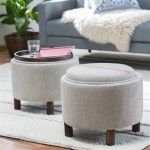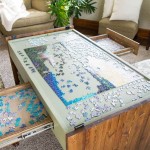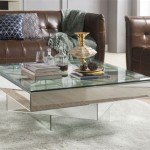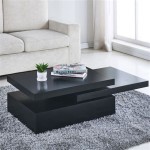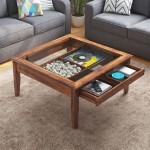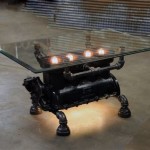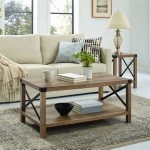How to Make a Table Runner at Home
A table runner is a decorative piece of fabric that runs lengthwise down the center of a dining table. It adds a touch of elegance and personality to any meal, and can be tailored to match the occasion or the season. Making a table runner at home is a rewarding project that allows you to express your creativity and create a unique piece for your dining table. This article will guide you through the process of making a table runner, from choosing materials to sewing the final product.
Choosing Materials
The first step is to select the right materials for your table runner. This includes choosing the fabric, the backing, and the thread.
For the fabric, consider the size and shape of your table, the style of your dining room, and the occasion for which you are making the table runner. You can choose from a wide range of materials, including cotton, linen, silk, velvet, and even burlap. Choose a fabric that is durable and easy to care for, as it will be exposed to spills and wear and tear. For a casual look, you can use a printed cotton fabric. For a more formal look, you can choose a silk or velvet fabric. If you are making a seasonal table runner, consider choosing a fabric with a pattern that matches the season. For a Thanksgiving table runner, you might choose a fabric with a fall leaf print.
The backing is the layer of fabric that goes underneath the top fabric. It adds stability and durability to the table runner and prevents the top fabric from fraying. You can use a plain cotton fabric or a fabric with a similar pattern to the top fabric. The backing should be slightly larger than the top fabric to allow for a seam allowance.
Lastly, choose a thread that matches the fabric and will be durable enough for the project. If you are using a cotton fabric, you can use a cotton thread. If you are using a silk fabric, you can use a silk thread.
Cutting and Sewing the Table Runner
Once you have chosen your materials, it is time to cut and sew the table runner.
Start by measuring the desired length and width of your table runner. Add a 1-inch seam allowance to each side of the fabric to create a finished edge. You can choose a straight edge or a rounded edge for your table runner, which will determine the shape of your fabric pieces.
Next, cut two pieces of fabric: one for the top fabric and one for the backing. For a simple table runner, you can cut both pieces of fabric to the same size. For a quilted table runner, you can cut the backing fabric slightly larger than the top fabric to allow for padding and seam allowance. If you are creating a quilted runner, you will need to cut batting to fit in between the top and backing layers. You can use 1/2 “ or 1” batting as desired. It is important to note that you may need to cut batting in multiple pieces to fit your table runner if your batting is not wide enough for the width of your runner.
Place the back fabric piece right side up on a flat surface. Place the batting piece next to the back fabric. Place the top fabric right side down on top of the batting. Pin all three layers together.
Once the fabric is cut, you can start sewing the pieces together. Using a sewing machine, stitch around the perimeter of the table runner. Using a straight stitch is sufficient for this project. You can also use a serger to finish the edges of the table runner. If using a regular sewing machine, you can use a zig zag stitch, a decorative stitch, or you can fold the edges of the fabric under to create a clean edge. Keep in mind that if you fold the edges under and sew them, you will need to do this for both the top and the back layers of fabric.
Adding Embellishments
Once the base of the table runner is sewn, you can add embellishments to personalize it. Some popular embellishments include:
- Embroidery: Add a design using embroidery floss or yarn to create visual appeal.
- Appliqués: Sew on fabric shapes, such as flowers, animals, or geometric patterns.
- Lace: Trim the edges of the table runner with lace for a touch of elegance.
- Beads and Sequins: Sew on beads or sequins for a glamorous look.
- Ribbons: Add ribbons to the edges or tie ribbons into bows for a decorative touch.
- Tassels: Sew on tassels to the corners or ends of the table runner for a bohemian look.
Choose embellishments that complement the style and theme of your table runner. Avoid overdoing it by keeping the embellishments subtle and appropriate for the occasion. Make sure to secure the embellishments firmly so they don't fall off easily.
Making a table runner at home is a fun and rewarding project that allows you to express your creativity and add a personal touch to your dining table. With a little planning and effort, you can create a beautiful and unique table runner that will enhance the ambiance of your dining room and impress your guests.

Beginners Table Runner Very Detailed Instructions

How To Make A Reversible Table Runner For Beginners

Quick And Easy Diy Table Runner Positively Splendid Crafts Sewing Recipes Home Decor

How To Make A Quick And Easy Table Runner With Strips Quilting

How To Make Table Runner At Home स ड बन ए ख बस रत ट बल रनर Diy

How To Make A Table Runner Just Fabrics

Make An Easy Star Quilt Table Runner Joyous Home

How To Sew A Ten Minute Table Runner Sewing 4 Free

How To Make Runner At Home From Old Kurti 30 Min Table Shresth Kitchen

How To Make An Easy Table Runner For Your Dining Room Our Little Handmade Home
Related Posts

